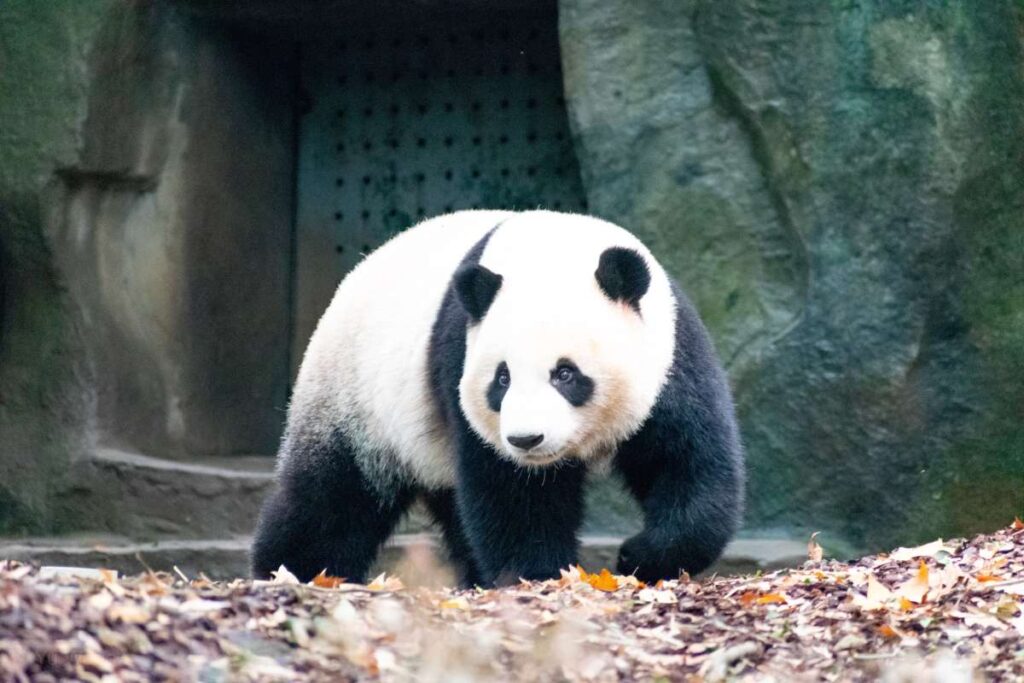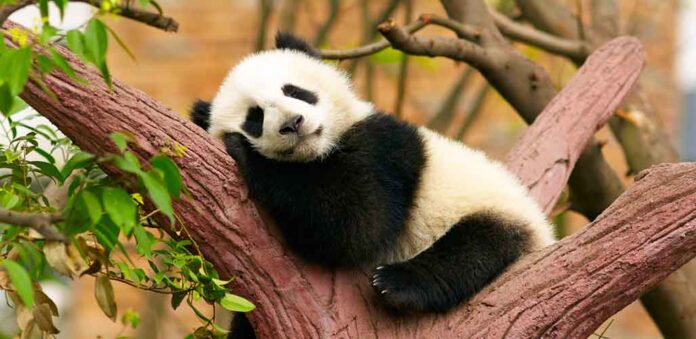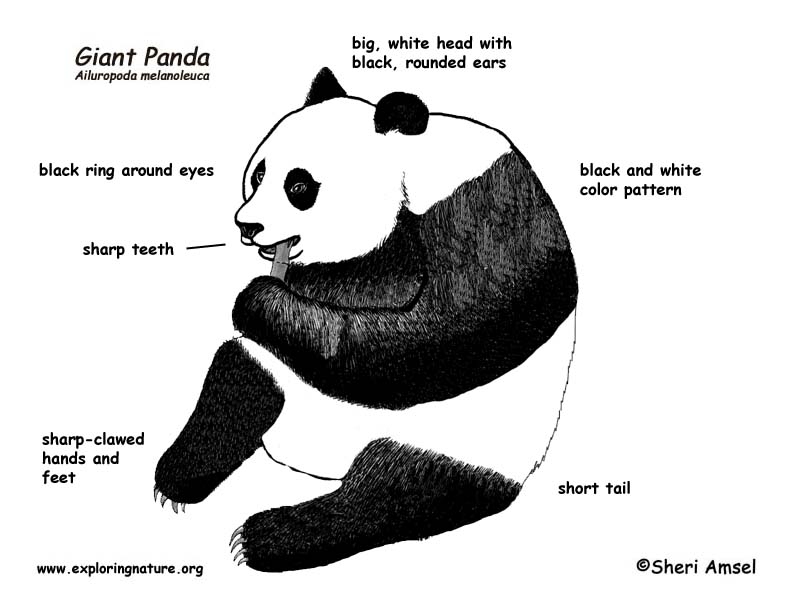Giant pandas, revered members of the bear family, boast a host of distinctive traits that set them apart. From their iconic black and white fur to their unique adaptations, these remarkable mammals are a testament to the wonders of the natural world. Here are thirteen characteristics that make giant pandas truly extraordinary:
1. Barrel-Shaped Build
Giant pandas possess stout, barrel-shaped bodies akin to other bear species. Most of their weight is concentrated in their body, with adult males weighing up to 350 pounds and adult females as little as 150 pounds.

2. Iconic Black and White Coat
Renowned for their instantly recognizable appearance, giant pandas flaunt a striking black and white coat. Their white bodies are accented by a distinctive band of black fur encircling their middles, extending to their arms, legs, ears, muzzle, and eye markings.
3. Round Ears
Topping their large, round heads are small, round ears that facilitate keen hearing. Although they lack natural predators, their acute sense of hearing remains valuable.
4. Skin That Mimics Fur
A unique trait of giant pandas is their skin mirroring their fur pattern. Their skin color matches the color of fur, maintaining the striking black and white contrast.

5. Luxuriant Fur
Adorned with remarkably dense fur, giant pandas appear plush and fluffy. This thick coat is essential for insulation, particularly as they inhabit the chilly mountainous terrain of Central China.
6. Pseudo-Thumb Adaptation
Featuring a specialized radial sesamoid bone that protrudes from the wrist, giant pandas possess a pseudo-thumb. This adaptation acts as an opposable thumb, enabling them to grip bamboo shoots with precision.

7. Short Tails
In line with typical bear characteristics, giant pandas have short tails measuring between 4 and 6 inches. This diminutive tail constitutes only about 1/10th of their body length.
8. Vertical Slit Pupils
Diverging from other bear species, giant pandas boast vertical slit pupils. This adaptation aids in reducing sunlight glare, facilitating enhanced vision, especially in snowy conditions and at night.

9. Powerful Jaw Muscles
Giant pandas possess robust jaw muscles that surpass those of many other bear species. This strength allows them to consume fibrous bamboo for extended periods and deliver formidable bites when necessary.
10. Herbivorous Diet
Despite anatomical features resembling carnivores, giant pandas primarily subsist on a herbivorous diet. Bamboo constitutes their staple food source, with adults consuming up to 83 pounds daily.

11. Self-Regenerating Teeth
The daily consumption of bamboo places significant strain on giant pandas’ teeth. Remarkably, their teeth regenerate enamel at microscopic levels, allowing them to withstand the rigorous wear and tear.
12. Limited Fertility Window
Female giant pandas undergo a brief annual fertility window lasting just two to three days. This narrow timeframe contributes to their endangered status, as it poses challenges for reproduction.

13. Tiny Offspring
Giant pandas give birth to remarkably small offspring compared to their own size. Newborns, measuring around 15 cm, are born blind and pink due to the nutritional limitations of their bamboo diet. This diminutive size exposes them to vulnerability, with many falling victim to maternal accidents.
Conclusion
The giant panda, Ailuropoda melanoleuca, stands as a marvel of the natural world, characterized by an array of unique features. From their distinctive fur pattern to specialized adaptations that suit their bamboo-centric lifestyle, these captivating creatures continue to captivate and inspire people around the globe.




















